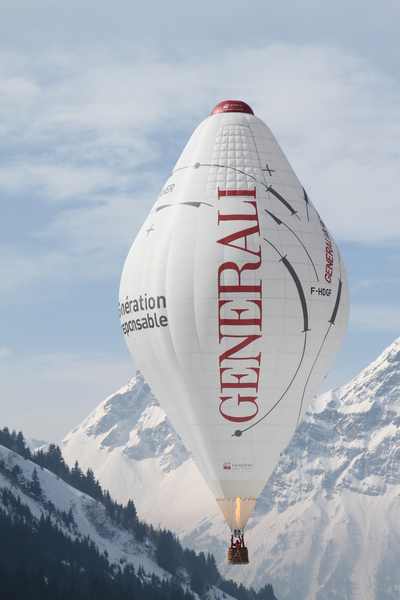
After passing close to the North Pole yesterday evening, Jean-Louis Etienne is continuing his crossing of the Arctic ice cap. The winds that are currently blowing should enable him to reach Siberia bringing him down near the town of Tiksi some time on Saturday.
Paris, Generali flight headquarters, 8th April 2010: Jean-Louis Etienne achieved the first goal of his airborne adventure at around 1815 hrs on Wednesday evening, when he flew over the area around the North Pole in his balloon. “I’m pleased and relieved , as right up to the end I tried to do my utmost to pass as close to the Pole as possible,” a tired Jean-Louis Etienne explained on Wednesday evening after missing out on a lot of sleep. “Yesterday I was really given a battering in the snow storm. For fourteen hours I sailed along at low altitude trying to stay 150 metres from the ground, which was the ideal level. It was tiring, and even scary at the end, as in these violent winds there were upcurrents and then columns of sinking air, which meant that the balloon rose very high up and then suddenly fell just as violently. When it descended the solar panels took off and smashed against the gondola. It was quite spectacular and exhausting. I haven’t had much sleep since the start. There is certainly some very disturbed weather at the Pole at the moment.”
Energy problem on board
Having achieved this first goal, Jean-Louis Etienne was hoping to find some calmer conditions and get some rest by moving up in altitude. But he was to have an unpleasant surprise during the polar night. Because of yesterday’s snow storm, his solar panels were unable to charge up his batteries correctly and this power problem meant that Jean-Louis Etienne had to climb up further to find some sunshine. “We sent him up to an altitude of 3000 metres to give a boost to his batteries,” explained Christophe Houver, the flight coordinator. “By saving energy, he has easily got 48 hours of self-sufficiency. The flight and his safety are not in question. We just took the measures that were required to allow the flight to continue more or less normally. Consequently, the fact that he climbed higher up moved him away from the ideal trajectory (towards Alaska, editor’s note). He moved to the right and this large shift means that he is now heading for Siberia instead of North America. But that doesn’t really change much about the flight itself. He is going to cover around 3000 km (1875 miles) across the Arctic Ocean.”
Heading for Siberia
Still being propelled by strong winds, Jean-Louis Etienne is therefore now heading for Siberia and more precisely for the port of Tiksi, on the edge of the Arctic Ocean. His recovery team will be setting off as soon as possible for Moscow in order to organise the recovery of the doctor-explorer when he comes back down to earth.
Figures about the flight (at 1400hrs on Thursday)
Flight time: 3 days 8 hours
Distance covered since the start: 2345 km (1465 miles)
Current altitude: 3820 metres
Current speed: 39 km/h (24.3 mph)
Average speed since the start: 29.3 km/h (18.3 mph)
Position: 78°16’N – 143°23’E